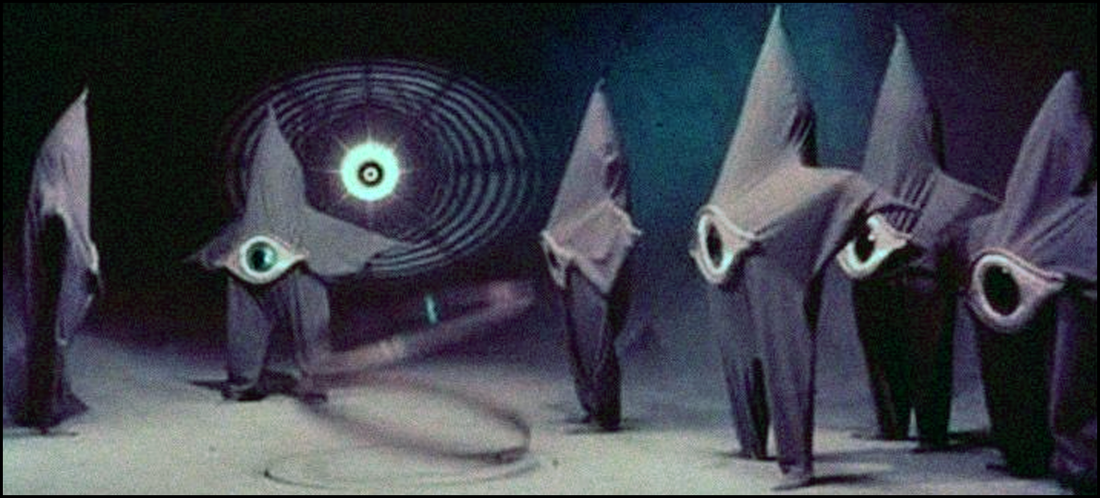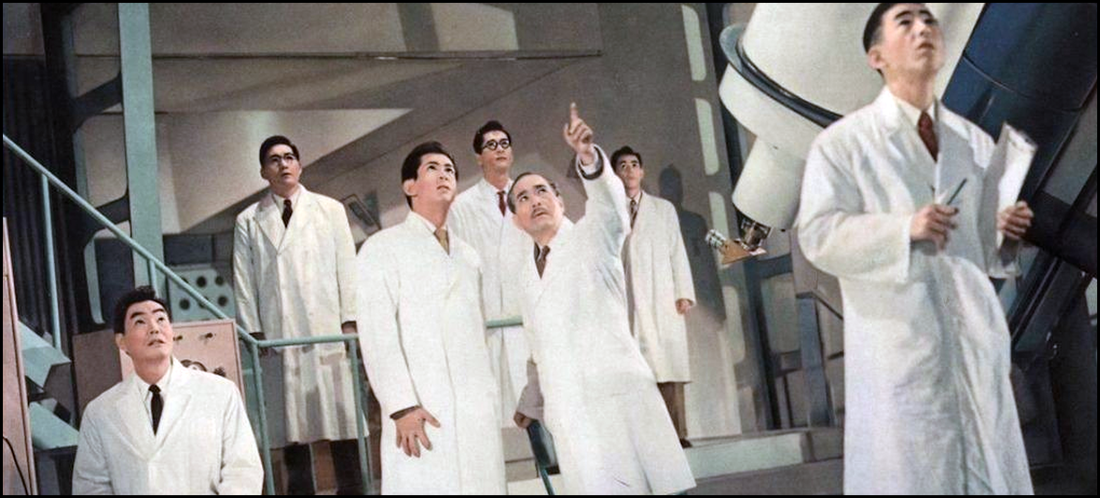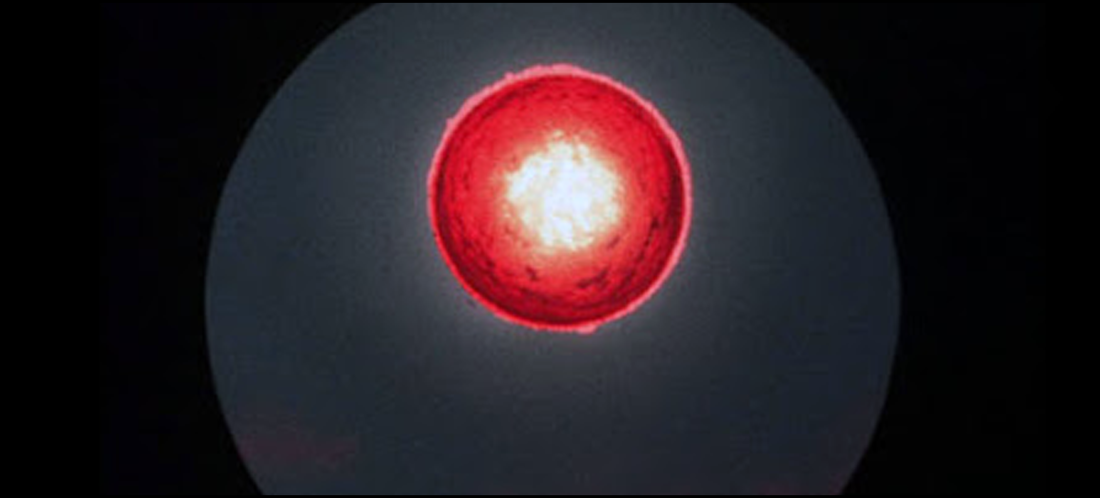Despite their second-rate appearance, these lesser films of my youth still occupy a full corner of my heart and soul. Their stories and performances are largely forgettable – you’ve seen one piece of camp, and you’ve seen them all – but storytellers of that era had to do more with less. Special effects and make-up were just really coming into their own, so visual tricksters would have to find creative ways of conveying, say, a man turning into a monster or a scientist building a spaceship that would take him and his crew to the moon. As one can guess, their efforts weren’t always convincing, but because of living when I did I have an endless appreciation for anyone who works to convey big ideas in small ways. It’s why I do even today gravitate toward smaller films as opposed to bigger ones: these flicks are populated by folks who, typically, try harder. That’s a fact.
So though I don’t remember seeing 1956’s Warning From Space as a kid specifically, I can say that I know I did. (Like I said, the stories of these films tend to blend together as they aren’t very distinctive.) How do I know? Well, I remember the film’s aliens as depicted in their native form. And, yes, I remember laughing at them. Thankfully, they aren’t all over the film – they appear somewhat sparingly until after they magically ‘morph’ into Earthlings – so it’s one of those forgivable sins. But as the old guy I now am, I think I do see some greater symbolism in the feature than my youthful eyes ever could’ve captured back in the day.
From the product packaging: “As Japan is rocked by mysterious sightings of UFOs over Tokyo and large one-eyed aliens attempting to contact, scientists collaborate to investigate the unexpected rise in extraterrestrial activity. Unbeknownst to them, one of the aliens has already assumed human form and is about to deliver a very important message … that could be humanity’s last hope for survival.”
Setting aside some of the film’s silliness, Warning From Space is essentially the Japanese equivalent to 20th Century Fox’s 1951 Science Fiction classic The Day The Earth Stood Still. While there are significant differences between the two tales, the central thread – that of aliens coming down to our planet with a message regarding our own self-destructive tendencies – is the core. What differs is the fact that the U.S. won World War II by using nuclear weaponry while the Japanese not only lost but also suffered one of the most horrific defeats imaginable: the use of the atomic bombs on Hiroshima and Nagasaki are controversial today (the passage of time tends to allow modern pundits with, say, moral fiber than those who lived in the thick of savagery), but it’s important to understand that Japan’s post-war storytelling attitudes were heavily influenced by what they saw and experienced. Much of that influences Warning’s second half, when the arrival of a new planet in our solar system spells certain doom for mankind.
Director Kôji Shima vividly explores the face of devastation, making tremendous, impressive use of color in his visuals. While the first half of the feature is rendered in bright lights with almost picturesque detail, the second half trims down that excess and instead floods the viewer with some dark and foreboding sights. Cities are captured in gray. Interiors once brightly lit are now dour and depressing. Almost like an impressionist painter, Shima subtracts the good elements of life and instead leaves the decay front-and-center; and one can only wonder what he and his art department may’ve drawn inspiration from their corner of the world.
Furthermore, that narrative is even a bit confusing regarding the film’s depicted science. At one point, the lead alien Ginko (in a dual role by actress Toyomi Karita that ends up being a bit more unintentionally comic than probably intended) instructs Earth scientists to destroy their latest discovery as it’ll certainly lead to our planet’s destruction. However, in the film’s last reel, it’s this very breakthrough that’s used by the alien ship to in fact save the world from the impending cataclysm. So if these aliens are so super-smart and only have our best interests in mind galactically, then why the plot hole? It’s never explained, nor did it probably matter to screenwriter Oguni. (Who knows? Maybe it’s lost in translation!)
But while we’re on the topic of the aliens?
More accurately, they’re called Pairans. They were designed for the film by world renowned avant-garde artist Taro Okamoto. As I mentioned in the opening to this review, their appearance brought me to laughter as a young’un, and that’s probably because I couldn’t possibly conceive of a man-sized starfish with a single eye in the middle of its body as being a legitimate extraterrestrial. At the time, my SciFi diet had already been heavily influenced by the likes of Star Trek and Planet Of The Apes, so a species that looked so bizarre tickled me pink, as they say. Now, I can definitely see some otherworldly influences and artistic predilections at play with Okamoto’s choices: an eye within a star might mean that we’re looking to the heavens as much as it could mean that the heavens are watching us, depending upon one's point-of-view. What made me chuckle as a boy gives me pause to think as an adult … or maybe that’s just how maturity works.
Yes, its effects are dated. Yes, its messages were probably not as original or as timely as were other films of the era. And yes the acting and staging were a bit undercooked. Still, there’s something about Warning From Space that deserves a little bit of attention, even if it’s a single viewing. Mind you: I’ve seen far worse from the era. With a tighter pace and a bit more charm, this Warning might even be worthing heeding. As it is, the film serves more as a snapshot of days gone by than it does a look into cinema’s tomorrow.
RECOMMENDED more as a novelty than anything else.
Much like the aliens depicted here, Toho Company’s Warning From Space (1956) is a curious oddity from another time and another place. While it bares the distinction of being the very first Japanese Science Fiction film to be made in color, there’s little else to see here except for a story that feels heavily influenced by real world events – namely World War II and the development of nuclear/atomic weapons – much in the same way 20th Century Fox’s The Day The Earth Stood Still (1951). Indeed, both films’ central thread revolves around an alien intelligence arriving on our planet with a message that amounts to “get your act together or else,” though Warning plays out with much dire consequences than Still ever approaches. This fundamental difference is likely owed to director Kôji Shima and the Japanese people’s wartime experience with Hiroshima and Nagasaki, making the film noticeably darker in tone and visuals than its American counterpart. Shima’s frame construction makes the motion picture worth a view, but the lackluster pacing kept me wishing for the end of life as we know it already.
In the interests of fairness, I’m pleased to disclose that the fine folks at Arrow Video provided me with a Blu-ray of Warning From Space by request for the expressed purposes of completing this review; and their contribution to me in no way, shape, or form influenced my opinion of it.
-- EZ





 RSS Feed
RSS Feed